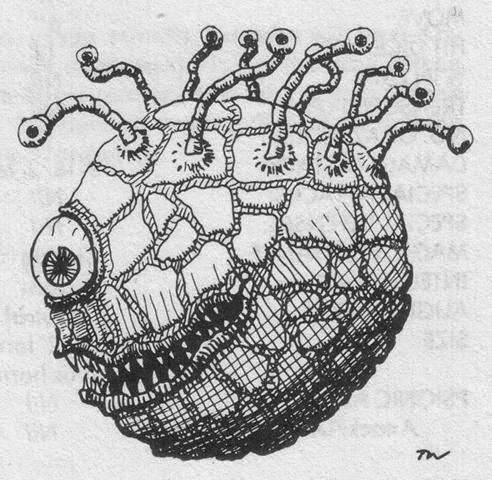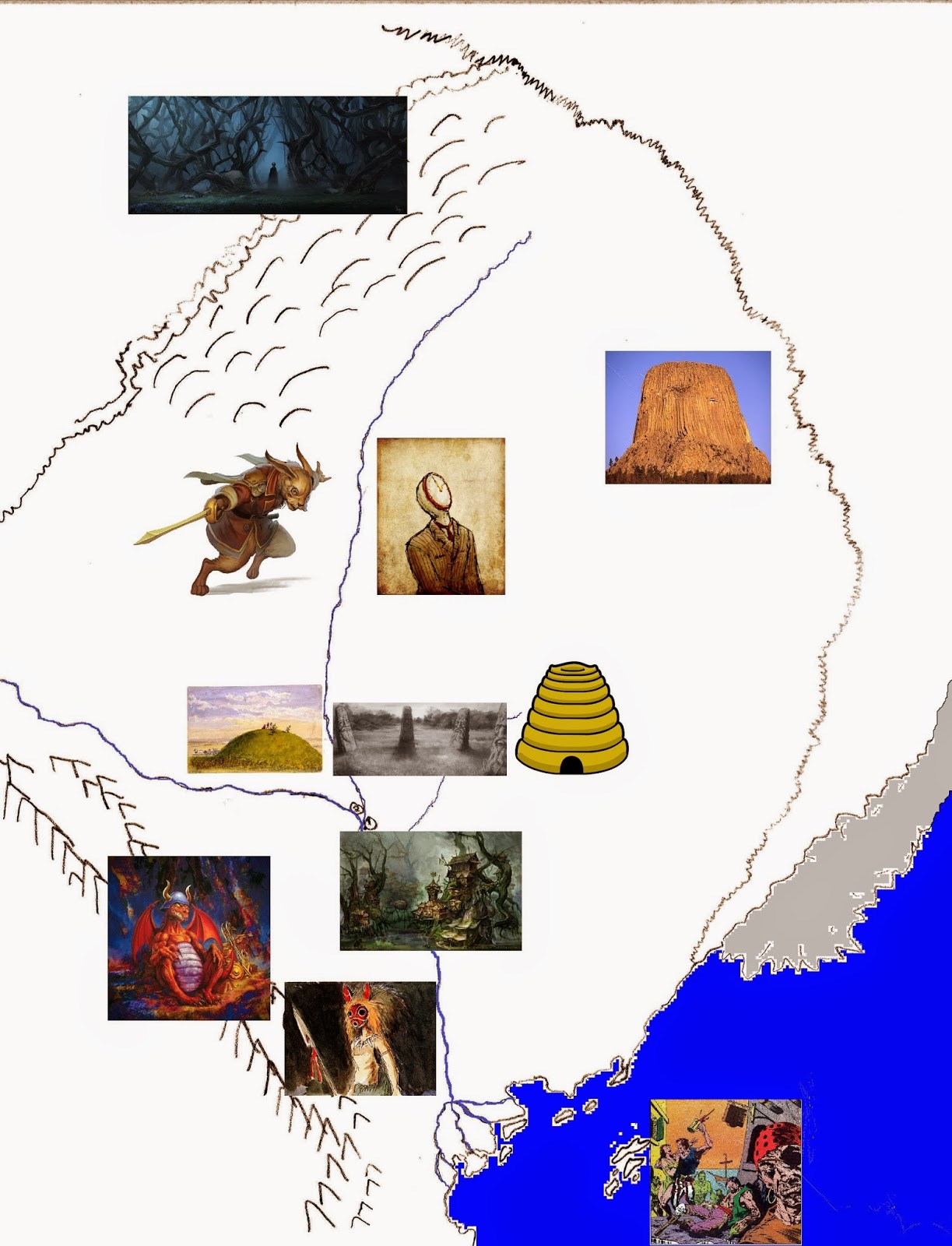Continuing my series of monsters from the 5e monster manual rethought for the Land of Azurth:
Behir
The behirs of the caves and caverns of Subazurth are somewhat smarter (somewhat) than those of other lands, but they are no less malign. If anything, their pompous air makes them even more intolerable; being eaten by a reptilian monster is one thing, but being condescended to beforehand is really too much! Behirs crawl out of their hiding places, slithering along the ceiling and out of passages that would seem to be too narrow for their size. They are surprisingly quiet, too. Many travelers are unaware of their presence, before they introduce themselves from out of the darkness and engage the frightened folk in conversation.
The thinly veiled threat of being eaten is ever-present so most humor the behir as they hold forth on art and letters or current affairs. Their knowledge is woefully outdated and incomplete (coming as it does from conversation with previous victims or from books the barely literate creature did not read in great detail) when not completely made up. What makes this discourse even less tolerable is the superior air and snide tone the behir affects at all times. A guaranteed way to end the conversation is to point out an error on the behir's part, but this ending is unlikely to be a happy one.
Beholder
There is a strange kingdom in Subazurth called Beautia. The folk of the kingdom are human, but its ruler is the Beholder, an exceedingly unhappy alien monster, stranded in this world. The Beholder is first and foremost an aesthete, and its deep melancholy arises from the ugliness it perceives in the world around it. How it misses the natural beauty of its homeworld: the sharp dimpling of the pools of bilious ooze by the fierce shard-rains, the moans of the pungent flesh-stalks as the writhing, pulsating grub-parasites suckle at their ichor.
Being of an extremely sensitive disposition, the Beholder has been driven mad by its exile. Its mood seesaws between tittering hysteria and spells of sobbing depression. Mostly, it retreats into solipsistic denial and attempts to remake its kingdom into a more pleasing form, punctuated with the occasional disintegration of a subject who has failed to be entirely pleasing. To that end, its subjects wear spherical masks in imitation of their king's form and pretend to be pre-adult instars of its species. Many of Beautia's folk actually believe they
are--spiritually, if not physically. Their state religion preaches spherification and eye-multiplication in successive reincarnations, until beholder perfection is reached.

























